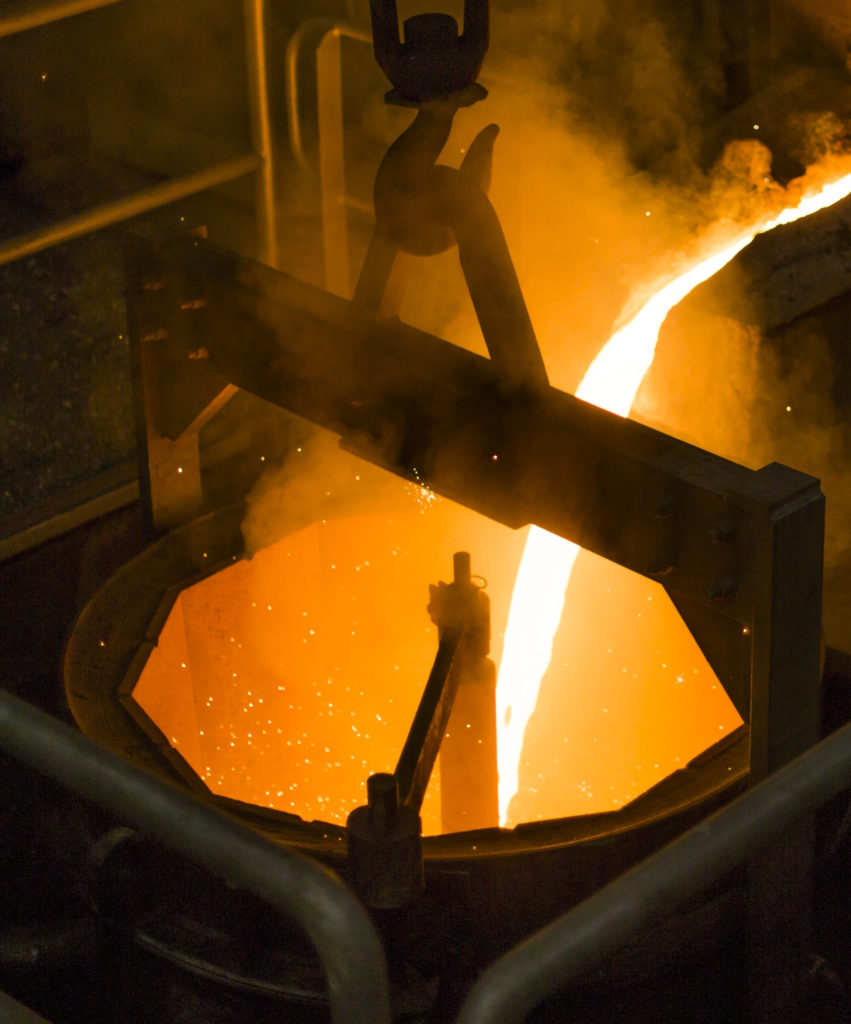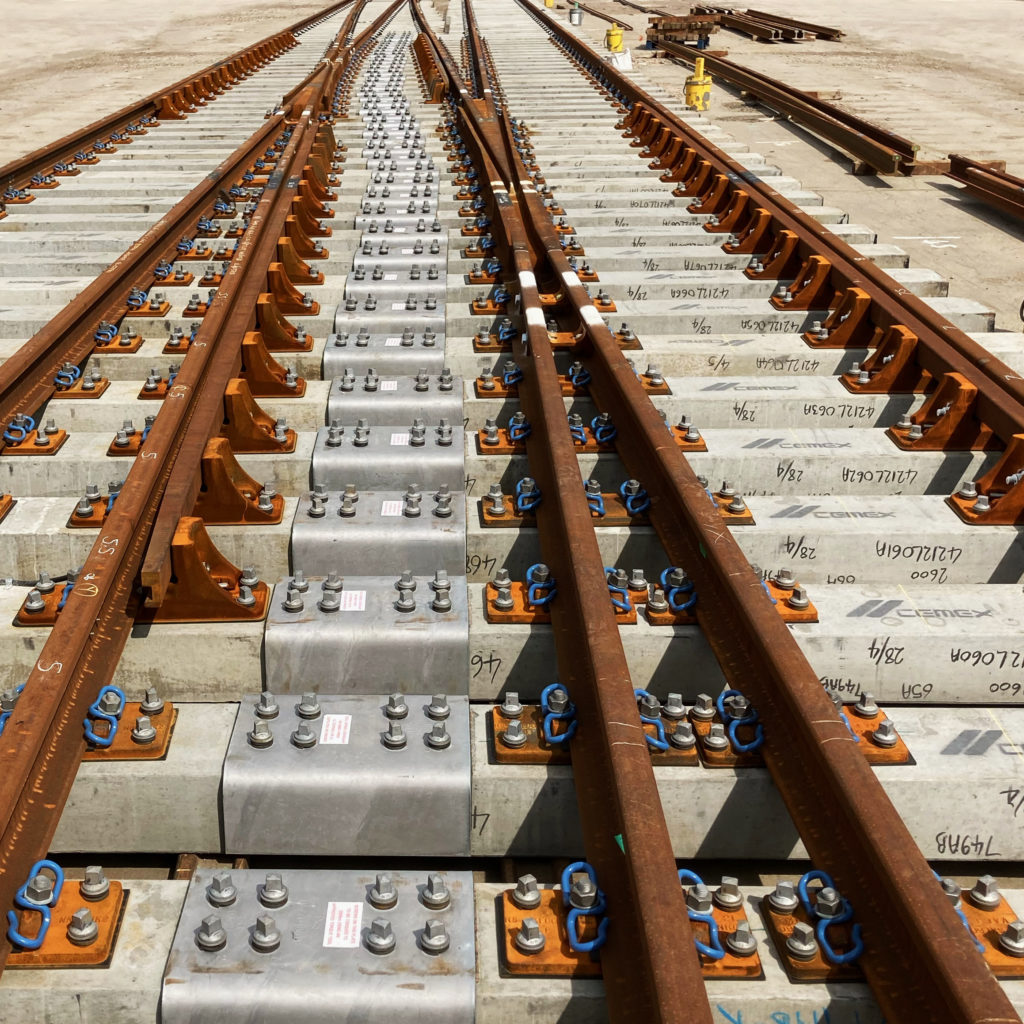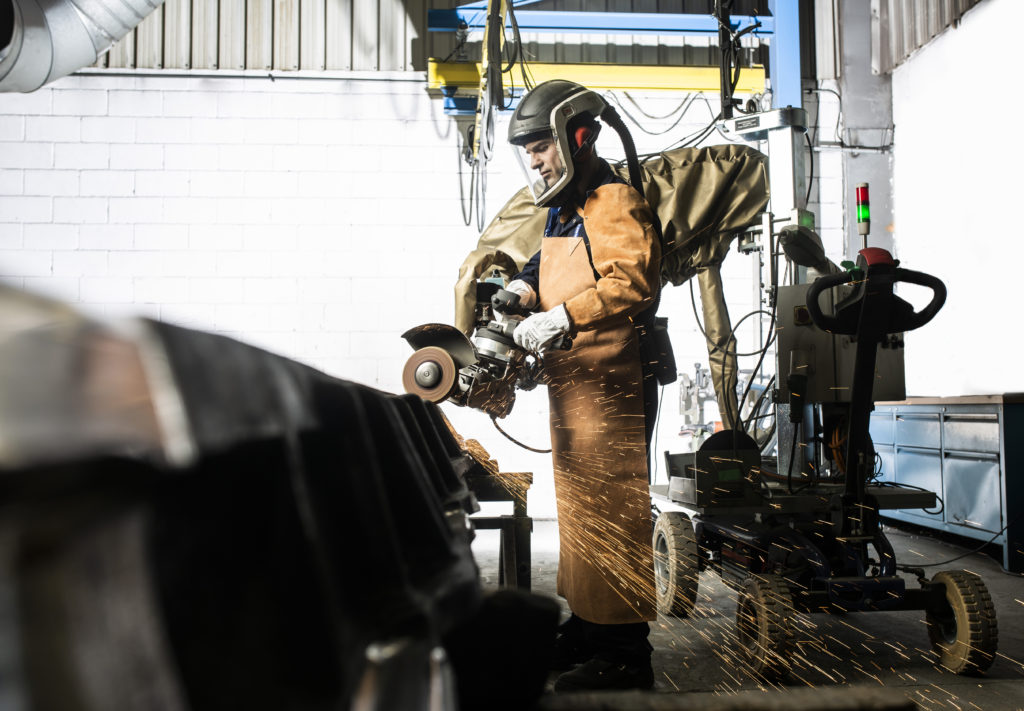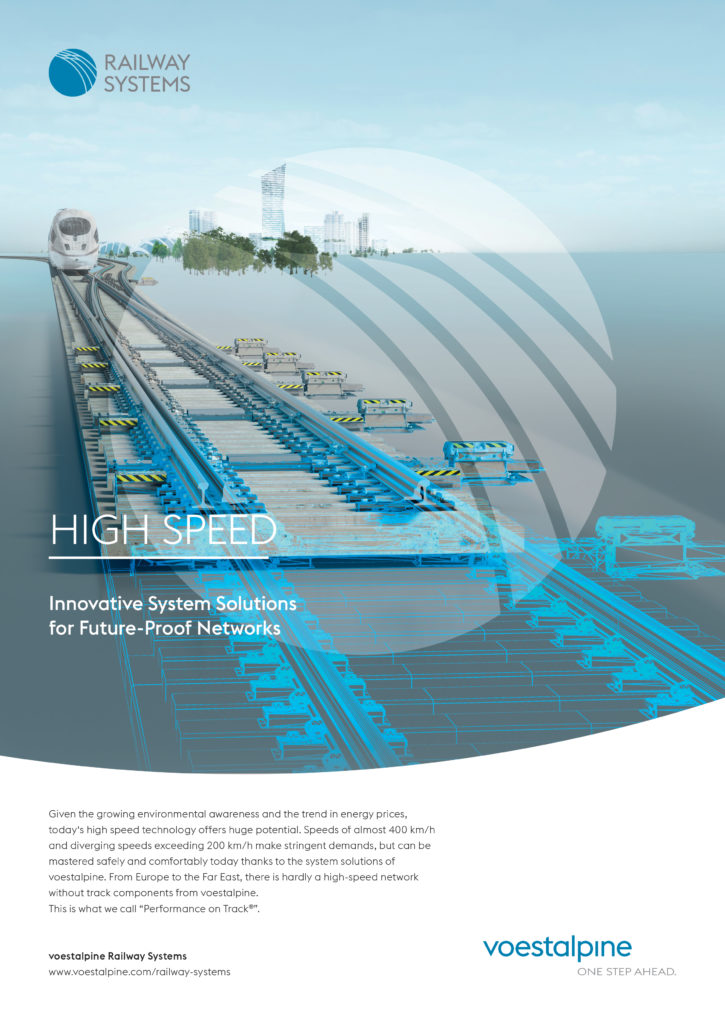Broken rails in plain line track – once a very serious problem – are now much less common. Improved rail manufacturing, the widespread use of heavier 60kg rail and improved defect detection have reduced the number of broken rails from 444 in 2002/3 to 71 in 2019/20. Although one can never be complacent, in broad terms the problem is now managed very effectively. In contrast, cracked and broken crossings in S&C have proved a stubborn problem to solve.
Crossings are subjected to very high impact forces and must be capable of withstanding high traffic loads. Certain worn wheel profiles cause extensive damage. Crossings are not designed to flex and must be adequately supported. For this, the layout must be installed on well-consolidated ballast and subject to effective regular maintenance to, among other things, prevent voiding underneath bearers. Such voiding greatly increases the stresses on individual elements of an S&C layout, including crossings.
Network Rail and its contractors have worked hard to improve the quality of S&C installation work in recent years. However, with many routes being very heavily used and possession time scarce, there is a risk that S&C layouts are being under-maintained, although reduced train frequencies during the pandemic have given maintenance teams an opportunity to carry out work on junctions which are normally difficult to access.
Driving change

For crossings used in CEN 60 layouts, the new NR 60 Mk II design is a big improvement. Compared to CEN 56 layouts, the heavier rail gives added stiffness and the closer bearer spacing – 650mm between centres as opposed to the previous 710mm – gives greater support. Improved rail pads offer more resilience and under-bearer pads aid ballast engagement. So new NR 60 layouts will be better able to withstand the forces to which they are subjected.
However, the number of new CEN 60 layouts is small and will only increase slowly. The harder and more urgent problem is how to reduce the number of cracked and broken crossings in existing CEN 56 layouts. The obvious beneficial measures of increasing the depth of the crossing or reducing bearer spacing are not possible when replacing a defective crossing in an existing layout. Tricky problems call for clever engineering.
Two factors have previously hindered design development. The vast library of crossing patterns held by the largest crossing supplier represents a financial incentive to perpetuate existing designs. Secondly, tenders issued by Railtrack and Network Rail have generally concentrated on procuring existing designs more cheaply, rather than developing higher quality, more durable products. So, with the exception of Explosive Depth Hardening as a post-manufacturing treatment, the design of CEN 56 crossings has remained static for a long period.
Network Rail’s track engineers became increasingly concerned at the numbers of crossings cracking or breaking under traffic, despite being correctly manufactured and compliant with the existing standard. Although traffic levels were increasing and, in some cases, layouts were perhaps being under-maintained, this clearly wasn’t the whole story. So NR resolved to rewrite standard NR/L2/TRK/012 with the objective of achieving more resilient and durable crossings. This complex project was undertaken by Bleddyn-James Davies, Network Rail’s Senior S&C Engineer.
Track record
voestalpine – the global market leader in S&C and advanced rail manufacturing – is one of three firms supplying crossings to the UK, the others being Progress Rail Services UK and Vossloh. voestalpine began supplying crossings to Railtrack after its entry into the UK S&C market in 1995 when it bought the former BR S&C works at Baileyfield in Edinburgh.
voestalpine Turnout Technology UK now operates both Baileyfield and a large finishing and assembly site at Harworth, nine miles south of Doncaster. In addition to its S&C business, the company also has a rail sales office in London as well as a signalling and remote monitoring technology company at Fareham in Hampshire.
voestalpine has a long-standing policy of investing heavily in both R&D and product technical support. In addition to being the leading global manufacturer of premium rails, it pioneered tri-metallic crossing welding, hydraulic back drives, advanced POE systems, the use of harder rails in S&C and tilting wagons for modular S&C.


Within its Railway Systems group of companies, voestalpine has crossing manufacturing centres in Bilbao in northern Spain and at Zeltweg in Austria. The Zeltweg complex is the second largest S&C manufacturing plant in the world, the largest being in China. Although smaller than Zeltweg, the JEZ plant at Bilbao is still large, with an annual capacity of more than 5,000 crossings. The main foundry, laboratory, designers and management are located at Llodio near Bilbao, while additional casting capacity, flash butt welding and finishing is at a second site in Arberats-Sillegue, just across the French border.
JEZ have been making S&C since 1926 and the team includes a significant proportion of highly-qualified technical staff in design, production and quality management roles. After welding and finishing in Arberates-Sillegue, new crossings are despatched to customers in 35 countries throughout Europe, Africa, Asia and the Americas.
Over recent years, voestalpine Turnout Technology UK has strengthened its team and instilled a real quality culture. The team has established an enviable track record for high-quality products, responsiveness to customer requirements and all-round user-friendliness.
A more demanding standard
In early 2018, the UK team accompanied Bleddyn-James Davies on the first of several visits to Bilbao to highlight the potential for design improvements to CEN 56 crossings. The senior designers at JEZ gave an extended technical presentation, based on their analysis of existing CEN 56 crossings. They made wide-ranging recommendations for detailed manufacturing and design changes.
The fixed parameters meant that there could be no single ‘magic bullet’, but meticulous analysis of every aspect of the design and every stage of manufacturing led to a series of potential changes which, collectively, would lead to a much more durable product. Crossing walls could be thickened and the underside flattened; potential stress-inducing features such as sharp edges and radii could be removed, while the process for pouring and cooling the liquid manganese steel could be improved. Advanced modelling of the impact of these changes demonstrated that the fatigue life of the crossing would be at least 20% greater. Given the fixed parameters, this was an excellent result.
Encouraged by this work, Bleddyn-James Davies then proceeded to finalise the new standard, which was issued in March 2019, with a compliance date of September 2019. Bleddyn’s ambitious approach was to aim high with a very onerous standard. Manufacturers are required to demonstrate how they comply and to risk-assess any aspects with which they cannot comply.
And now…
Since its initial work, the JEZ design team has been through an iterative development process which has led to a mature fifth version of the improved crossing. Increasing numbers of these cost-effective and more durable crossings are being ordered by Network Rail, both to fulfil current orders and increase emergency stocks.
The sales and design teams at voestalpine Turnout Technology UK have been busy liaising with order originators, clarifying the precise characteristics of the crossing required. Some frontline maintenance staff need assistance with the dizzying array of S&C installed in the network. The team at Harworth liaises very closely with JEZ over supply schedules.
It is a credit to both teams that they have managed to increase supply during the end of the Brexit transition period and a global pandemic! In fact, due to hard work in both countries, supplies from JEZ experienced only minor problems with the new post-Brexit customs arrangements and every week more crossings are arriving at Harworth. Here they have their leg ends cut to the required length, and baseplates and spacer blocks fitted as required, prior to despatch to the customer.


In Bilbao, JEZ is busy expanding its stock of expensive, precisely manufactured patterns. It already held patterns for the most commonly-used NR crossings; these have now been modified to reflect the new improved V5 design. A large number of additional patterns are being produced to widen the range of crossings JEZ can cast for the UK market.
Pattern-making is a highly-skilled process. Patterns were previously made from solid wood but, even with careful storage, these could distort over time. High-quality wood laminate is now preferred. To keep the patterns in the best possible condition, they are stored in a warehouse with both temperature and humidity control. The process of designing new patterns is time-consuming and requires meticulous care, but two new patterns are now being completed every week.
These significant design and service improvements – especially when combined with Network Rail’s plan to hold larger stocks of crossings – will reduce the incidence of crossings failing in traffic and will reduce supply lead times to hard-pressed frontline maintenance staff who have the onerous task of keeping our busy and varied rail network in good condition.


